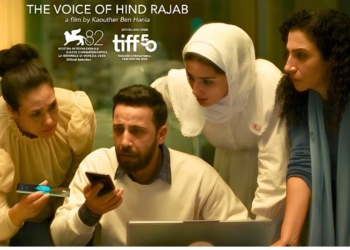
By John W. Whitehead | Rutherford
“The brutal reality is that a predator doesn’t have to be in the same room, building, or even country to abuse a child. And that’s what they’re doing — subjecting children to psychological and sexual abuse.”—“I’m a 37-Year-Old Mom & I Spent Seven Days Online as an 11-Year-Old Girl. Here’s What I Learned,” Medium
What can we do to protect America’s young people from sexual predators?
That’s the question I keep getting asked by people who, having read my article on the growing danger of young boys and girls (some as young as 9 years old) being bought and sold for sex, want to do something proactive to stop these monsters in their tracks.
It is estimated that the number of children who are at risk of being trafficked or have already been sold into the sex trade would fill 1300 school buses.
While those who seek to buy young children for sex come from all backgrounds, races, ages and work forces, they do have one thing in common: 99% of them are men.
This is not a problem with an easy fix.
That so many children continue to be victimized, brutalized and treated like human cargo is due to three things: one, a consumer demand that is increasingly lucrative for everyone involved—except the victims; two, a level of corruption so invasive on both a local and international scale that there is little hope of working through established channels for change; and three, an eerie silence from individuals who fail to speak out against such atrocities.
Sure, there are things that can be done to catch those who trade in young flesh: police need to do a better job of training, identifying and responding to these issues; communities and social services need to do a better job of protecting runaways, who are the primary targets of traffickers, and educating parents and young people about the dangers; legislators need to pass legislation aimed at prosecuting traffickers and “johns,” the buyers who drive the demand for sex slaves; and hotels need to stop enabling these traffickers, by providing them with rooms and cover for their dirty deeds.
However, these are reactive responses to a menace that grows more sophisticated by the day.
We need to be preemptive and proactive in our understanding of the threats and smarter and more sophisticated in our responses, as well.
What we are dealing with is a culture that is grooming these young children, especially young girls, to be preyed upon by men.
As Jami Nesbitt writes for Bark, “Grooming is the process by which someone befriends and gains the trust of a child (and sometimes the child’s friends and family) in order to take advantage of the child for sexual purposes.”
There are usually six stages to grooming by a sexual predator: friendship (targeting and gaining trust); relationship (filling the child’s needs); gauging the level of protection surrounding the child; exclusivity (isolating the child from others); sexualization (desensitizing the child to sex talk and activities); and abuse.
All of those screen devices being passed along to children at ever-younger ages? They have become the sexual predator’s primary means of gaining access to young people, and it’s primarily happening online. As The New York Times reports:
“Sexual predators have found an easy access point into the lives of young people: They are meeting them online through multiplayer video games and chat apps, making virtual connections right in their victims’ homes. Many of the interactions lead to crimes of ‘sextortion,’ in which children are coerced into sending explicit imagery of themselves.”
Indeed, video games such as Minecraft and Fortnite, social media apps such as TikTok and Instagram, and online chat forums have become “hunting grounds” for sexual predators.
Again from The New York Times:
“Criminals strike up a conversation and gradually build trust. Often they pose as children, confiding in their victims with false stories of hardship or self-loathing. Their goal, typically, is to dupe children into sharing sexually explicit photos and videos of themselves — which they use as blackmail for more imagery, much of it increasingly graphic and violent. Reports of abuse are emerging with unprecedented frequency around the country, with some perpetrators grooming hundreds and even thousands of victims.”








![Who Is Bobby Kennedy? [30-Minute Film on RFK Jr.’s Life, Narrated by Woody Harrelson]](https://consciouslifenews.com/wp-content/uploads/2024/05/who-is-bobby-kennedy-350x250.jpg)







